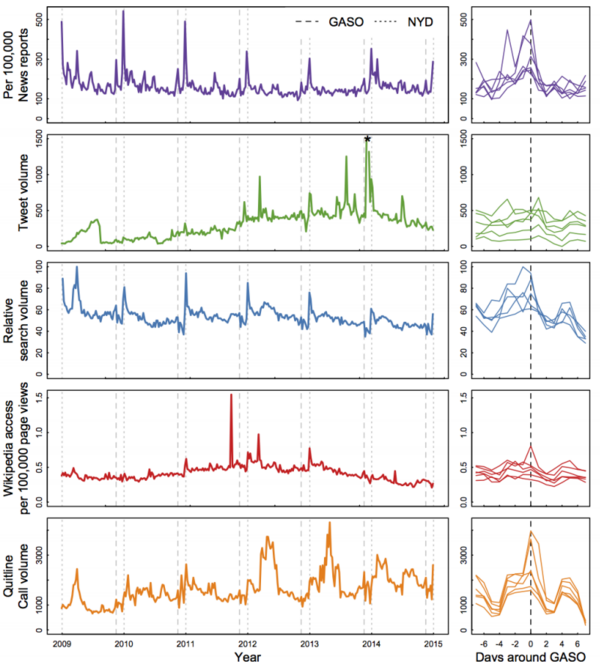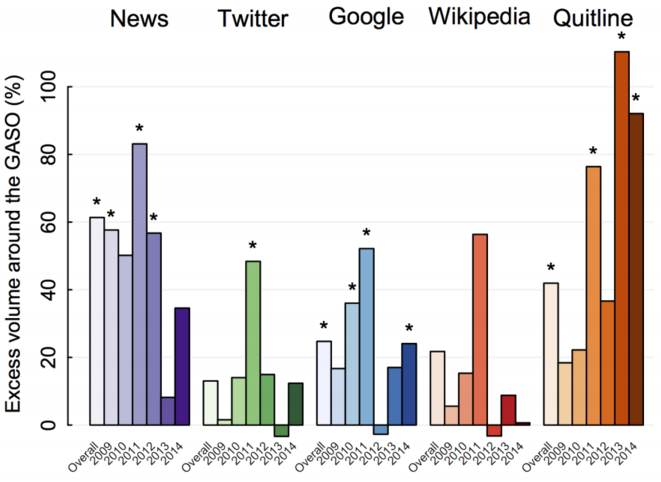
As a general rule, raising awareness — simply trumpeting to people that this or that thing is important or underappreciated or dangerous — is overrated. “We’ve known for over 50 years that providing information alone to people does not change their behavior,” Victor Strecher, a professor at the University of Michigan’s School of Public Health, told me when I first made this argument in 2014.
There are some interesting exceptions, though. Recently, Science of Us reported on a study that suggested the awareness-bump brought about by Charlie Sheen disclosing his HIV-positive status may have saved lives, since it was such a big focusing event that likely led many people to get tested or have safer sex.
Now the lead author on that study, Dr. John W. Ayers, a computational epidemiologist at San Diego State University, has out a new study in JMIR Public Health and Surveillance that measures the impact of the Great American Smokeout, or GASO, a 40-year-old event occurring on the third Thursday of November that “has encouraged media coverage and popular engagement with smoking cessation” and is the “nation’s longest running awareness campaign.”
Ayers and his colleagues measured the GASO’s effects by looking at five droves of data: information about the volume of calls to tobacco quitlines, how often Wikipedia pages on the subject were accessed, how often people conducted Google searches pertaining to quitting, how often they tweeted on the subject, and how often it was mentioned per 100,000 news reports.
Here’s the rundown for each. On the left panel, the vertical lines mark GASO and New Year’s Day — known to be an important time of the year for health-related activity like trying to quit smoking. The right panel covers only the days immediately around GASO.

And here’s the estimated increase in volume for each of the items on the date of GASO relative to what the researchers predict would have happened if GASO hadn’t occurred at all.

It’s clear from looking at the graphs that GASO had a far larger impact in some ways than in others, and that New Year’s Day tended to be a big deal. Overall, though, the graphs show that GASO has had an effect — though, as always, how all this translated to real-world health benefits depends on what percentage of people who call a quitline or seek out information about quitting actually follow through, but some percentage do.
What’s particularly interesting is that, based on the data they collected and seasonal patterns in internet use, the researchers have some ideas for how they could make GASO more effective:
Because media messages need to be timed to reach receptive audiences, one suggestion to better ensure GASO’s cessation messages reach a more receptive audience would be to relocate these on the calendar. GASO is currently celebrated close to the holiday season when the lowest cessation-related help-seeking outcomes were observed. Add to this the recent discoveries about repeating seasonal and circaseptan (day of the week) patterns in cessation contemplations with the greatest interest during late winter and particularly on Monday, an empirically justified date of observing GASO, for example, would be the last Monday in February. With more smokers primed to consider cessation already, the GASO may very well realize larger increases apart from any specific change to its implementation.
Now, GASO is something of an outlier example because it’s been around so long — and, arguably, because there’s such strong infrastructure behind anti-smoking efforts. Plus, the more different messages are vying for our attention, the less effective any one message is going to be, and some messages simply get ignored for various reasons.
Still, both this paper and Ayers’s last one complicate simple pessimism about awareness-raising efforts. Sometimes, it turns out, awareness isn’t overrated. Or awareness days aren’t, at least.




